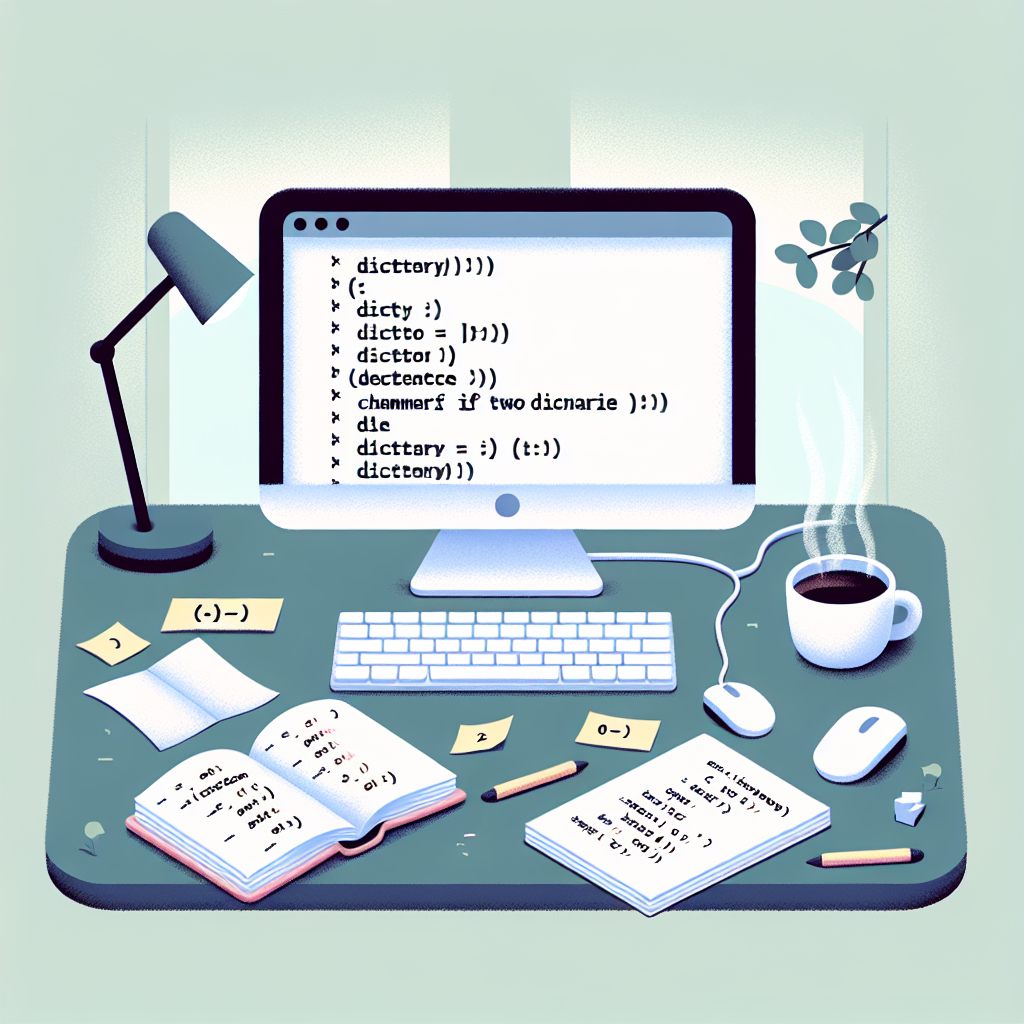Check If Two Dictionaries Are Equal in Python

Welcome to an in-depth exploration of how to determine the equality of two dictionaries in Python. Dictionaries are a fundamental data structure in Python, used to store data in key-value pairs. As a versatile and powerful tool, they are often used in various applications, from data analysis to web development. In this article, we will delve into the nuances of comparing dictionaries, ensuring that you have a comprehensive understanding of the topic by the end.
Understanding Dictionary Equality in Python
Before we dive into the technicalities, it’s crucial to understand what it means for two dictionaries to be equal. In Python, two dictionaries are considered equal if they have the same key-value pairs, regardless of the order in which these pairs are stored. This is because dictionaries are unordered collections, and their equality is not determined by the sequence of their elements.
Methods to Compare Dictionaries
There are several ways to check if two dictionaries are equal in Python. We will explore each method with examples to illustrate their usage.
Using the Equality Operator (==)
The most straightforward way to compare two dictionaries is by using the equality operator ==. This operator checks whether both dictionaries contain the same key-value pairs.
dict1 = {'a': 1, 'b': 2, 'c': 3}
dict2 = {'b': 2, 'c': 3, 'a': 1}
print(dict1 == dict2) # Output: True
Comparing with the ‘is’ Operator
The ‘is’ operator checks if two variables point to the same object in memory, which is not the same as checking for equality of their contents.
dict1 = {'a': 1, 'b': 2, 'c': 3}
dict2 = dict1
print(dict1 is dict2) # Output: True
Using the ‘all()’ Function and Dictionary Comprehension
For a more explicit check, you can use the all() function in combination with dictionary comprehension to compare keys and values.
dict1 = {'a': 1, 'b': 2, 'c': 3}
dict2 = {'b': 2, 'c': 3, 'a': 1}
equal = all(dict1[k] == dict2[k] for k in dict1 if k in dict2)
print(equal) # Output: True
Using the ‘cmp()’ Function in Python 2.x
In Python 2.x, the cmp() function was used to compare dictionaries, which is not available in Python 3.x.
# Python 2.x code
dict1 = {'a': 1, 'b': 2, 'c': 3}
dict2 = {'b': 2, 'c': 3, 'a': 1}
print(cmp(dict1, dict2)) # Output: 0 (indicates equality)
Deep Comparison of Dictionaries
When dictionaries contain nested dictionaries or lists, a deep comparison is necessary to ensure that the nested structures are also equal.
Using the ‘deepdiff’ Library
The deepdiff library provides a way to perform deep comparisons of dictionaries, lists, and other complex data structures.
from deepdiff import DeepDiff
dict1 = {'a': 1, 'b': {'x': 10}}
dict2 = {'b': {'x': 10}, 'a': 1}
diff = DeepDiff(dict1, dict2)
print(diff) # Output: {}
Performance Considerations
When comparing large dictionaries, performance can become a concern. It’s important to choose an efficient method to avoid unnecessary overhead.
Time Complexity Analysis
The time complexity of comparing two dictionaries using the equality operator is O(n), where n is the number of elements in the dictionary. This is because each key-value pair must be checked for equality.
Practical Applications and Case Studies
Comparing dictionaries is a common task in various applications, such as data synchronization, configuration management, and more. We will look at a case study where dictionary comparison is crucial.
Case Study: Configuration Management
In configuration management, it’s essential to check if the current configuration matches the desired state. Dictionary comparison can be used to verify this.
Best Practices for Comparing Dictionaries
- Use the equality operator for simple comparisons.
- Consider using deepdiff for deep comparisons.
- Be mindful of performance when dealing with large dictionaries.
FAQ Section
How do you handle comparison of dictionaries with different types?
When dictionaries contain different data types, the equality operator will return False. It’s important to ensure that the data types are consistent before comparing.
Can you compare ordered dictionaries in the same way?
Ordered dictionaries (collections.OrderedDict) maintain the order of insertion, and their comparison also considers the order of elements.
What happens if the dictionaries have different keys?
If the dictionaries have different keys, the equality operator will return False, as all keys and values must match for the dictionaries to be considered equal.
Conclusion
In conclusion, comparing dictionaries in Python is a straightforward task that can be accomplished using various methods, depending on the complexity of the dictionaries involved. By understanding the nuances of dictionary comparison, you can ensure accurate and efficient data handling in your Python applications.

